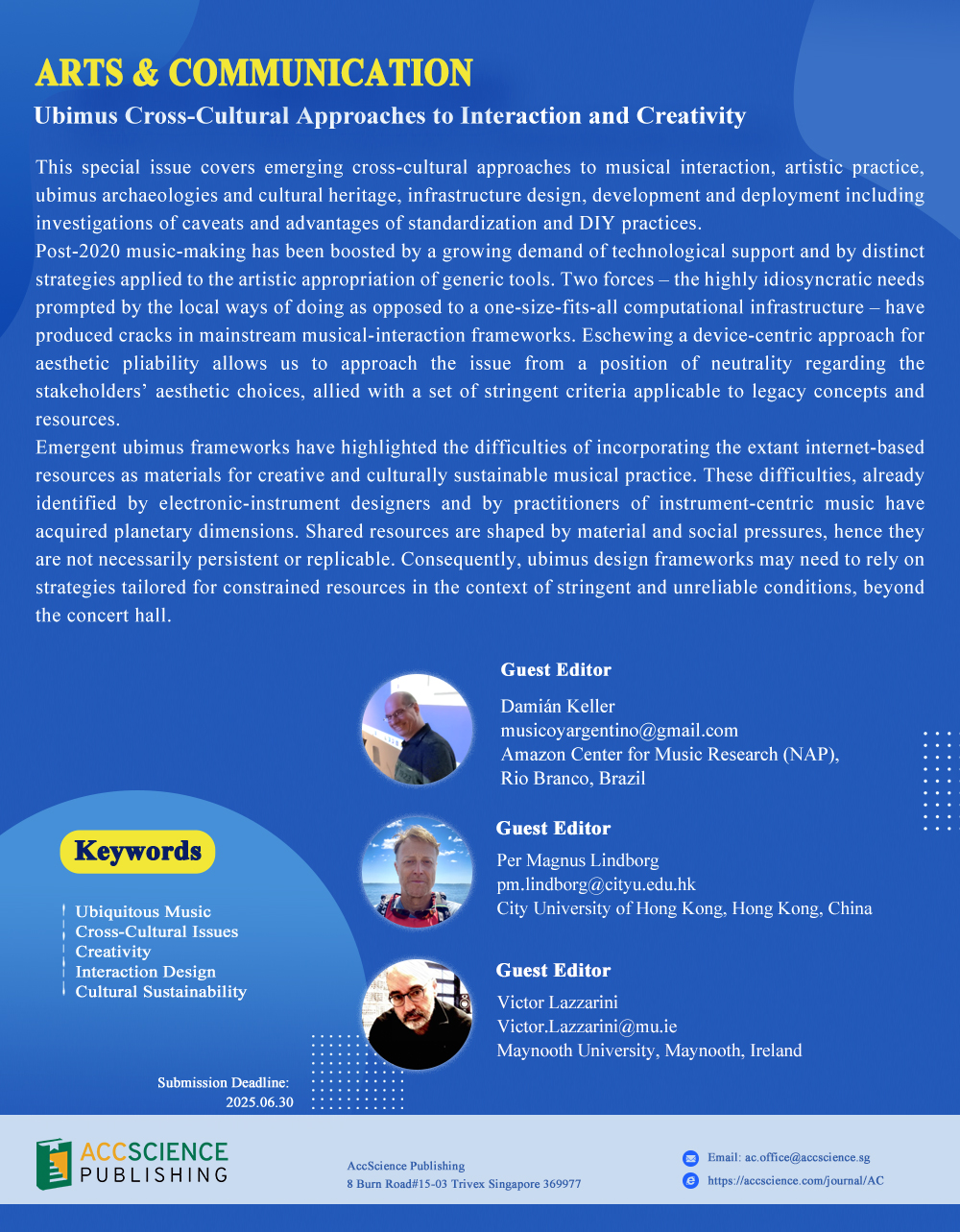
This special issue covers emerging cross-cultural approaches to musical interaction, artistic practice, ubimus archaeologies and cultural heritage, infrastructure design, development and deployment including investigations of caveats and advantages of standardization and DIY practices.
Post-2020 music-making has been boosted by a growing demand of technological support and by distinct strategies applied to the artistic appropriation of generic tools. Two forces – the highly idiosyncratic needs prompted by the local ways of doing as opposed to a one-size-fits-all computational infrastructure – have produced cracks in mainstream musical-interaction frameworks. Eschewing a device-centric approach for aesthetic pliability allows us to approach the issue from a position of neutrality regarding the stakeholders’ aesthetic choices, allied with a set of stringent criteria applicable to legacy concepts and resources.
Emergent ubimus frameworks have highlighted the difficulties of incorporating the extant internet-based resources as materials for creative and culturally sustainable musical practice. These difficulties, already identified by electronic-instrument designers and by practitioners of instrument-centric music have acquired planetary dimensions. Shared resources are shaped by material and social pressures, hence they are not necessarily persistent or replicable. Consequently, ubimus design frameworks may need to rely on strategies tailored for constrained resources in the context of stringent and unreliable conditions, beyond the concert hall.
Push the ENVELOPE: A program to develop creative engagement between emerging artists and audiences in Hong Kong
The development of an improvising machine in ubiquitous music environments
Interactive audio toolkit: Creating sonic experiences and installations with low-cost, low-power microcontrollers




